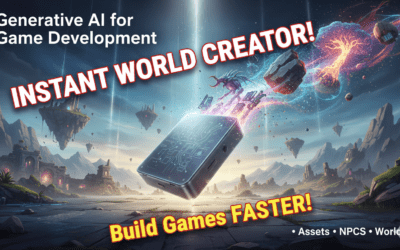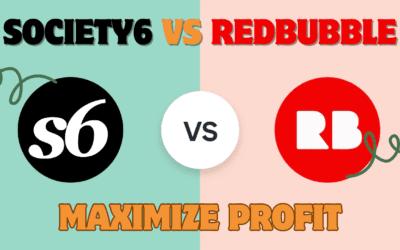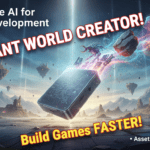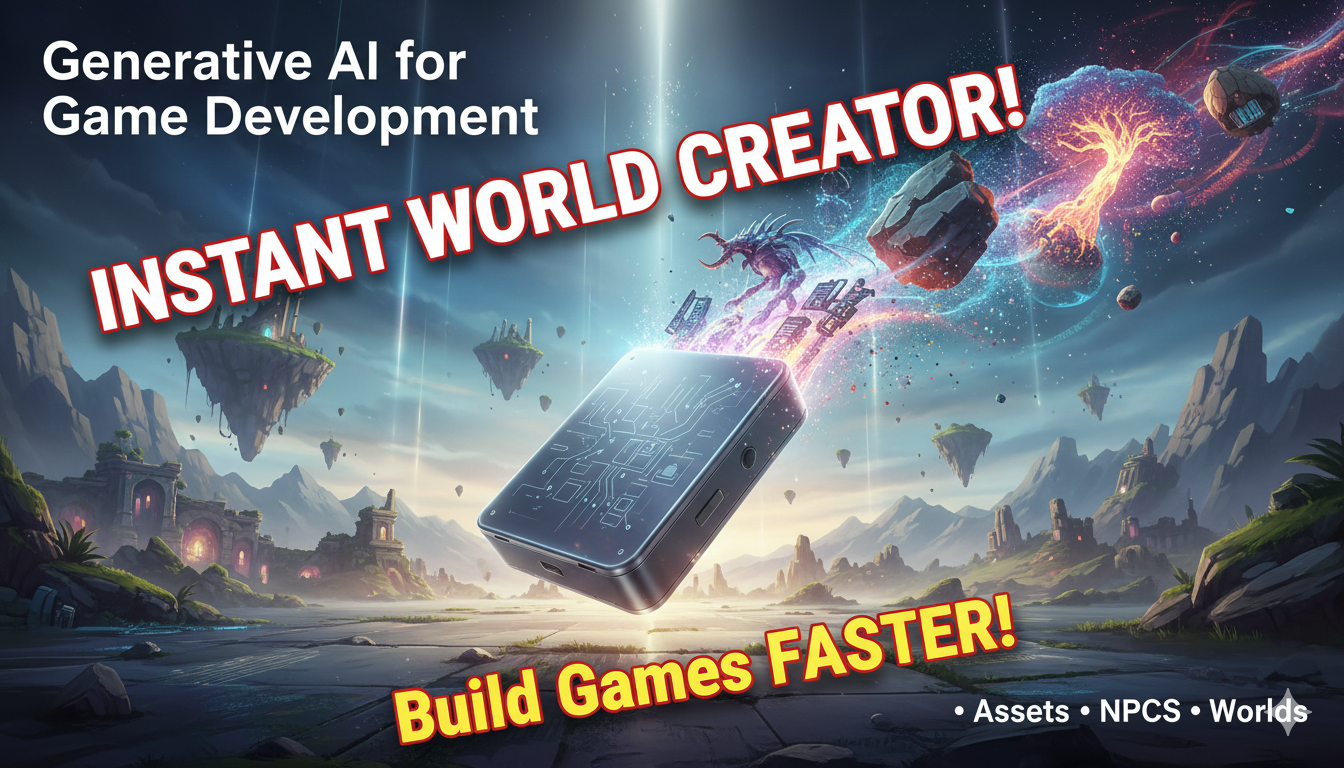Introduction: The Generative AI Revolution in Gaming
Generative AI for game development represents a fundamental shift in how games are created, moving beyond pre-scripted automation to intelligent systems that produce original content. This technology leverages machine learning models to generate everything from concept art and 3D models to dynamic dialogue and entire worlds, fundamentally reshaping development workflows.
The transformation is already widespread: recent Google Cloud research reveals that 90% of game developers are already using some form of AI in their workflows, with 97% believing generative AI is actively transforming the industry. This adoption is driven by AI’s potential to tackle rising development costs, market saturation, and player demands for more dynamic experiences. As the industry stands at this technological crossroads, understanding generative AI’s applications becomes essential for every development studio.
AI-Generated Game Assets: Revolutionizing Content Creation
The creation of game assets—from character models to environmental textures—has traditionally been one of the most time-consuming and resource-intensive aspects of development. Generative AI is dramatically accelerating these pipelines while expanding creative possibilities.
Tools and Technologies for Asset Generation
Several specialized AI tools have emerged that cater specifically to game asset creation:
- Tencent’s Hunyuan-Game: This specialized tool, trained on millions of gaming datasets, can render sketches in approximately one second and generate three-view diagrams in minutes rather than the traditional 12+ hours, representing a 300% increase in production speed. It excels at generating mobile environments, characters, and UI elements with impressive precision.
- Meta’s WorldGen: This research system demonstrates how entire 3D environments can be generated from single text prompts like “cartoon medieval village” or “sci-fi base station on Mars.” The technology creates fully navigable scenes spanning 50×50 meters while maintaining stylistic and geometric consistency.
- Blender Copilot: An AI-powered add-on for Blender that uses natural language instructions to streamline 3D workflows, including texture and material generation.
These tools are part of a broader ecosystem that includes everything from image generation platforms like Midjourney and Stable Diffusion to specialized 3D asset creators like Luma AI and Meshy.ai.
Transforming Developer Workflows
The impact on developer workflows is substantial. According to one study of game development professionals, generative AI significantly accelerates ideation, enhances prototyping, and automates repetitive tasks. This allows artists to focus on higher-level creative direction rather than manual execution.
Table: Major Generative AI Tools for Game Asset Creation
| Tool Name | Primary Function | Key Features | Notable Applications |
|---|---|---|---|
| Hunyuan-Game | 2D/3D Asset Generation | Real-time sketching, automated character views, 300% speed increase | Character design, environment concepts |
| WorldGen | 3D World Generation | 50×50 meter navigable worlds, stylistic consistency | Interactive environments, simulation spaces |
| Blender Copilot | 3D Modeling Assistance | Natural language commands, texture generation | 3D modeling workflows, material creation |
| Promethean AI | Environment Assembly | Automated environment assembly from prompts | Game level design, scene composition |
AI-Driven NPCs and Characters: Beyond Scripted Interactions
Non-player characters have long been constrained by predetermined dialogue trees and behavioral scripts. Generative AI is breathing new life into these digital entities, creating characters that can engage players in dynamic, unscripted interactions.
Creating Dynamic NPC Dialogue and Behavior
Advanced AI systems now enable NPCs with sophisticated conversational capabilities. Tools like Ubisoft’s Ghostwriter generate first drafts of NPC dialogue bars, reducing writer workload on repetitive lines while preserving human creative control over final editing. Meanwhile, character AI platforms such as Inworld have raised significant funding ($500M) specifically for developing AI-powered NPCs capable of nuanced interactions.
The implementation of reinforcement learning allows NPCs to evolve and adapt based on player interactions, creating unique, human-like reactions rather than predetermined responses. This technology enables NPCs to analyze player strategies and develop countermeasures, leading to more engaging and unpredictable gameplay experiences.
Technical Challenges and Solutions
Despite the excitement, implementing AI-driven NPCs presents significant technical hurdles:
- The Hallucination Problem: LLMs can “hallucinate” or make up information that breaks game continuity. Even the best AI models have hallucination rates around 3%, which can be disastrous when NPCs invent quests, locations, or game mechanics that don’t exist.
- Game State Integration: Connecting conversational AI to actual game mechanics remains challenging. As Reed Berkowitz notes, an NPC inviting a player for coffee can break immersion when the game lacks coffee mechanics, the NPC cannot leave their post, or there’s no physical location to visit.
- Character Knowledge Management: Each NPC must operate with constrained knowledge appropriate to their role and background. Without careful design, an innkeeper might inexplicably possess detailed knowledge of secret assassination plots, breaking narrative coherence.
Successful implementations require robust constraint systems, careful integration with game mechanics, and maintaining human creative oversight to ensure AI-generated content aligns with the overall game vision.
Procedural Worlds and Narrative Generation
The creation of vast, compelling game worlds and stories represents perhaps the most ambitious application of generative AI in game development. Rather than manually crafting every environment and plot point, developers can now use AI to generate expansive, dynamic universes.
AI-Powered World Generation Systems
Procedural generation is not new to gaming, but generative AI elevates it significantly beyond earlier implementations. Systems like Google DeepMind’s Genie 3 can generate entire 3D worlds from text prompts at 24 FPS in 720p resolution, maintaining visual consistency for up to a minute with realistic physics.
These systems represent a fundamental shift from simple asset generation to comprehensive world modeling. Meta’s V-JEPA 2, for instance, demonstrates remarkable efficiency by learning from video footage and applying that understanding to new environments and tasks. The technology is advancing rapidly, with some systems achieving a 600x reduction in the tokens needed to represent video frames, making real-time AI-generated worlds increasingly feasible on consumer hardware.
Dynamic Narrative Construction
Generative AI is also transforming game storytelling. Research frameworks exploring narrative co-creation examine how AI models can collaborate with humans to build engaging stories, with new assessment methods for evaluating the creativity, quality, and engagement of AI-generated narratives.
LLMs integrated with game engines can generate branching quest lines, character backstories, and environmental storytelling elements. However, the most successful implementations maintain human authors in central creative roles, using AI for inspiration and content generation while preserving narrative coherence and emotional impact.
Challenges and Risks in Generative AI Implementation
While generative AI offers tremendous potential, its integration into game development presents significant challenges that studios must navigate carefully.
Intellectual Property and Ethical Concerns
Data ownership represents a primary concern for developers, with 63% expressing apprehension about IP issues surrounding AI-generated content. Uncertainty about training data provenance and ownership of AI-generated outputs creates legal and ethical ambiguities. Additionally, player data privacy remains a significant consideration, particularly when using cloud-based AI services that process in-game interactions.
The industry also faces concerns about creative authenticity and potential homogenization of content. As noted in one research paper, “while AI can generate large volumes of assets quickly, these assets often lack the artistic depth and intentionality of human-created designs”.
Technical and Creative Implementation Hurdles
- Quality Control: AI-generated content may struggle to maintain thematic coherence, potentially leading to inconsistencies in game worlds.
- Performance Overhead: Real-time AI generation, particularly for complex NPC interactions or world generation, requires significant computational resources that must be balanced against other game performance demands.
- Integration Complexity: Successfully incorporating AI tools into existing pipelines often requires substantial workflow adjustments and staff training, with 23% of developers citing the need for upskilling as a significant challenge.
- Cost Considerations: The expense of AI integration is a concern for 24% of developers, including both initial implementation costs and ongoing usage fees for cloud-based services.
Actionable Recommendations for Game Developers
Successfully integrating generative AI requires strategic planning and careful implementation. Here are key recommendations for development studios:
Strategic Integration Approaches
- Start with Specific Pilots: Begin with small-scale implementations targeting specific pain points. According to research, 40% of developers recommend using limited pilots before full implementation. Ideal starting points include NPC barks, environmental props, or concept art generation.
- Maintain Human-Centric Creative Control: Position AI as a collaborative tool rather than a replacement for human creativity. Establish clear review processes where human artists, writers, and designers curate and refine AI-generated content.
- Align AI Use with Creative Vision: Ensure AI implementations serve the game’s overall creative direction. As 39% of developers recommend, AI should enhance rather than dictate creative choices.
Governance and Best Practices
- Establish Clear Evaluation Metrics: Define success criteria for AI implementations upfront. Research shows that 38% of developers emphasize the importance of establishing clear evaluation criteria.
- Implement Robust Data Management: Address IP concerns by carefully documenting training data sources and establishing protocols for content ownership. Consider self-hosted AI solutions when data privacy is paramount.
- Invest in Team Training: Allocate resources for upskilling team members, as 39% of developers identify training as crucial for successful AI integration.
- Balance Local and Cloud Processing: For real-time applications like NPC dialogue, consider local LLMs to eliminate latency and recurring API costs while ensuring data privacy.
Conclusion: The Future of Generative AI in Game Development
Generative AI represents more than just a new set of tools—it signifies a fundamental shift in the very nature of game creation. As the technology continues to evolve, we’re moving toward a future where developers serve as creative directors guiding AI systems, focusing on high-level vision while AI handles implementation details.
The trajectory points toward increasingly sophisticated world generation, with systems like WorldGen and Genie 3 paving the way for entirely new forms of dynamic, player-responsive environments. NPCs will evolve from scripted automations to genuine digital beings with persistent personalities and memories, enabled by more powerful local AI processing.
For development studios, the future will belong to those who successfully balance human creativity with AI augmentation—leveraging technology to enhance rather than replace artistic vision. As one study notes, the most promising path forward involves “developing collaborative human-AI workflows that maintain human oversight, designing systems that support rather than replace creative decision-making, and establishing ethical guidelines to ensure transparency, accountability, and authorship”.
The generative AI revolution in game development is just beginning. Studios that approach this technology strategically, with careful attention to both its potential and its pitfalls, will be positioned to create unprecedented gaming experiences that blend human creativity with artificial intelligence in ways we’re only beginning to imagine.
Sources and References
- Google Cloud Press Corner. (2025). 90% of Games Developers Already Using AI in Workflows
- Berkowitz, R. AI Powered NPCs — Hype, or Hallucination? Medium
- Game Developers Conference. (2025). 2025 GDC Trends Report
- PMC. (2025). Generative AI in Game Design: Enhancing Creativity or…
- Codewave. (2025). The Future of Game Creation: AI’s Role in Video Game Development
- Meta. (2025). Research Update: WorldGen — Text to Immersive 3D Worlds
- arXiv. (2025). Generative AI in Game Development: A Qualitative Research Synthesis
- Groupify. (2025). Use these 5 Amazing Generative AI Tools to Create Breathtaking Game Worlds
- Macaron. (2025). OpenAI Realtime: A New Era of Real-Time AI Interaction
- Hartmann Capital. (2025). The AI Revolution Reshaping Gaming | Q3 2025 Report


















